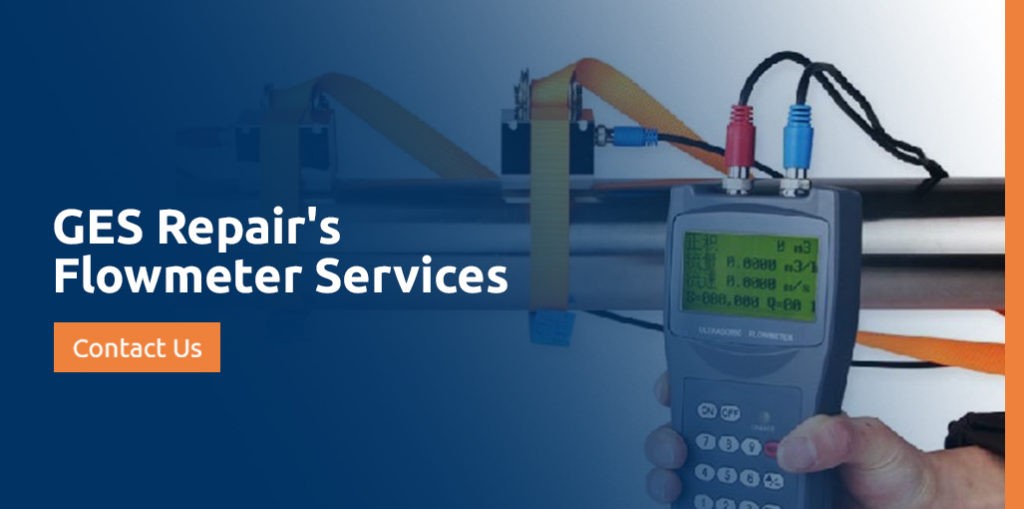Advantages and Disadvantages of Ultrasonic Flowmeter
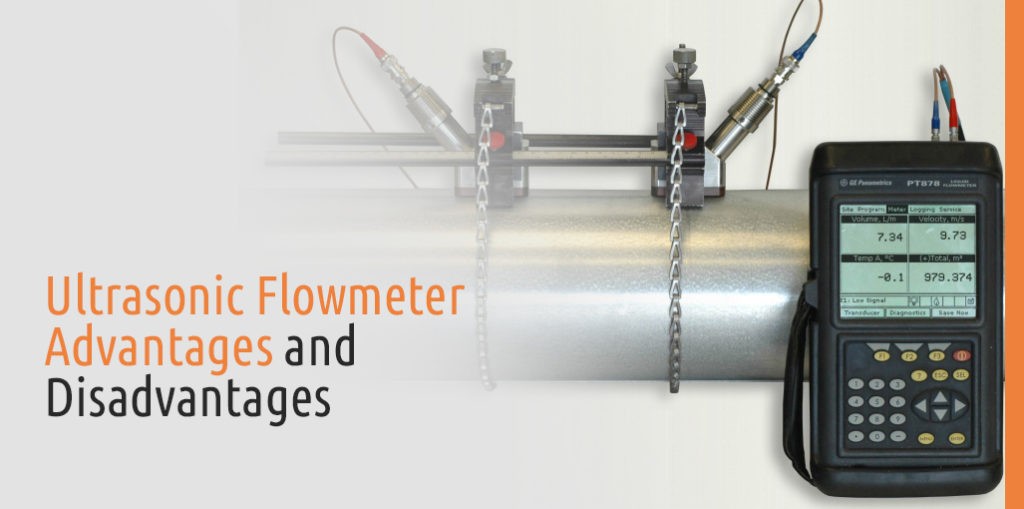
From petrochemical to wastewater treatment, flow measurement is an integral part of many industries. There are several ways to measure flow, each using a different type of technology. Some examples include mechanical, electromagnetic, turbine and vortex flowmeters. While these traditional methods are highly useful, they are not always the best option for the application.
In certain situations, traditional flow measurement tools with moving parts or intrusive pieces may be undesirable. Many applications could benefit from a flow measurement technique that is non-invasive and long-lasting. Ultrasonic flowmeters fit these requirements perfectly. Ultrasonic meters measure flow without needing to make contact with the contents of a pipe. Some ultrasonic flowmeter options are even non-destructive, non-invasive clamp-on meters.
While ultrasonic flowmeters sound ideal, they still have drawbacks. If you’re looking into flowmeter options, it is essential to understand the advantages and disadvantages of each option.
What Are Ultrasonic Flowmeters?
Ultrasonic flowmeters, as the name suggests, are meters that use sound waves to measure flow. These meters are attached around the inside or outside of a pipe, and when activated, transmit ultrasonic waves from one side of the meter to the other. These transmitted waves are then collected and measured to determine the flow.
There are multiple types of flowmeters, though they operate on the same principle. Some can be inserted into the pipe or attached inline. Some options can even be attached to the outside of the pipe using clamps — this variety of ultrasonic transducer is known as a clamp-on flow transducer.
How Do Ultrasonic Flowmeters Work?
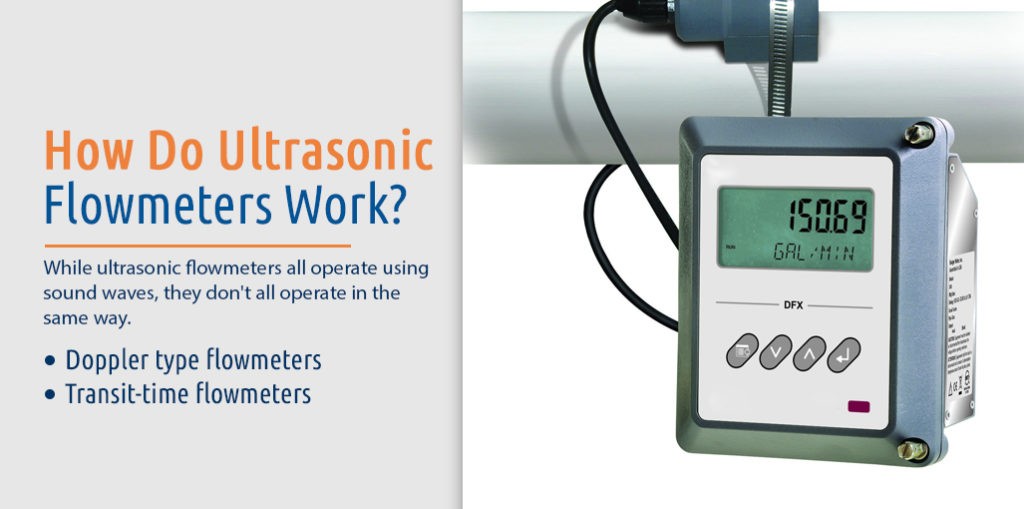
While ultrasonic flowmeters all operate using sound waves, they don’t all operate in the same way. There are two primary types that differ slightly in how they transmit and measure sound waves — these are Doppler type and transit-time type:
- Doppler type flowmeters: Doppler type flowmeters operate by taking advantage of the Doppler effect. The meter transmits a sound wave through the fluid and measures how the wave reflects. When the fluid is still, the frequency of the reflected sound is the same. However, if the liquid is moving, the frequency of the reflected wave is different — an effect called the Doppler effect, which can be used to calculate flow rate.
- Transit-time flowmeters: With transit-time flowmeters, ultrasonic waves are sent in opposite directions on a diagonal — one signal is sent upstream, while the other is sent downstream. The time difference it takes for these signals to reach the opposite side is used to measure flow. In no-flow conditions, the transit-time measurements will be identical. In flowing conditions, the upstream wave will travel slower than the downstream wave.
Both of these flowmeter types measure by transmitting and receiving ultrasound waves through a liquid-carrying pipe. The primary difference between the two is that Doppler flowmeters can measure liquids with impurities and particulates, while transit-time ultrasonic meters primarily measure clean liquids with no such particles.
Advantages of Ultrasonic Flowmeters
Ultrasonic flowmeters are highly useful in a variety of applications across multiple industries. Just a few of the benefits offered by ultrasonic flowmeters include:
- No moving parts: Traditional mechanical flowmeters measure pressure through the use of moving parts, which serve as mechanical sensors. Unfortunately, these parts pose several problems. They often obstruct flow and cause pressure loss. The moving parts also degrade over time, providing less accurate results and requiring repair and replacement. Since there are no moving parts in ultrasonic flowmeters, you don’t have to worry about them degrading or creating a blockage.
- Low maintenance: Since ultrasonic flowmeters don’t involve moving parts, they last a long time with very little maintenance. They also have low power consumption, so they often last for several years before the batteries need to be replaced.
- Digital and analog options: Ultrasonic flowmeters come in a wide range of outputs, and advanced technology has allowed for the creation of ultrasonic transducers with digital readouts and network connection capabilities. This means that transducers can communicate measurements in real time to a central monitoring system.
- High accuracy: As long as the meter is properly mounted and installed, these meters are highly accurate. However, inline and insertion flowmeters are generally more accurate than clamp-on ultrasonic flowmeters.
It is important to note that ultrasonic meters are often mounted on the inside of pipes in cases where the pipe quality isn’t good. If pipe quality is sufficient, clamp-on ultrasonic options are available.
Disadvantages of Ultrasonic Flowmeters
While ultrasonic flowmeters offer many advantages, they are far from perfect solutions. Some of the issues associated with them are:
- Higher upfront cost: Ultrasonic flowmeters are significantly more expensive than many of the other inline flowmeter options available today. Much of this is because the acoustic parts are very expensive. While these meters offer long-term cost benefits, the upfront cost of purchasing and installing them may pose an issue.
- Substance limitations: Ultrasonic flowmeters cannot be used for heavily contaminated liquids or slurry. Essentially, any type of liquid that cannot pass ultrasonic energy is incapable of being measured using an ultrasonic flow measurement device.
It is also important to note that ultrasonic flowmeters installed inline or inside a pipe do not offer the same benefits as clamp-on ultrasonic flowmeters in terms of maintenance cost savings — fixing and adjusting these flowmeters require cutting into pipes and potentially halting production.
Advantages and Disadvantages of Transit-Time Type Flowmeters
While the above advantages apply to all ultrasonic flowmeters, some advantages are applicable only to certain types. Some of the specific benefits of transit-time meters are:
- Bi-directional measurements: While many traditional flowmeters only measure in a single direction, transit-time ultrasonic flowmeters measure flow in both directions — forward and reverse.
- High stability: Transit-time meters are unaffected by the temperature, density or concentration of the liquids they measure, making them a more stable measuring device.
- Ability to measure liquids and gasses: Ultrasonic flowmeters can be used to measure a wide variety of liquids. Transit-time meters are often used for liquids without particulates, as they do not handle contaminated liquids well. Some of the fluids that transit-time flowmeters commonly measure include water, molten sulfur and cryogenic liquids. Transit-time flowmeters are even able to measure gas and vapor flow.
While transit-time flowmeters offer these benefits on top of the benefits of typical ultrasonic flowmeters, they do have one substantial drawback — they are extremely limited in the types of substances they can measure. Transit-time meters are excessively sensitive to particulates and impurities, producing errors from even small gas bubbles — in fact, many manufacturers find the accuracy of a transit-time ultrasonic flowmeter is negatively affected when bubbles and particulates reach a certain level of concentration. As a result, transit-time meters require only clean liquids.
Advantages and Disadvantages of Doppler Type Flowmeters
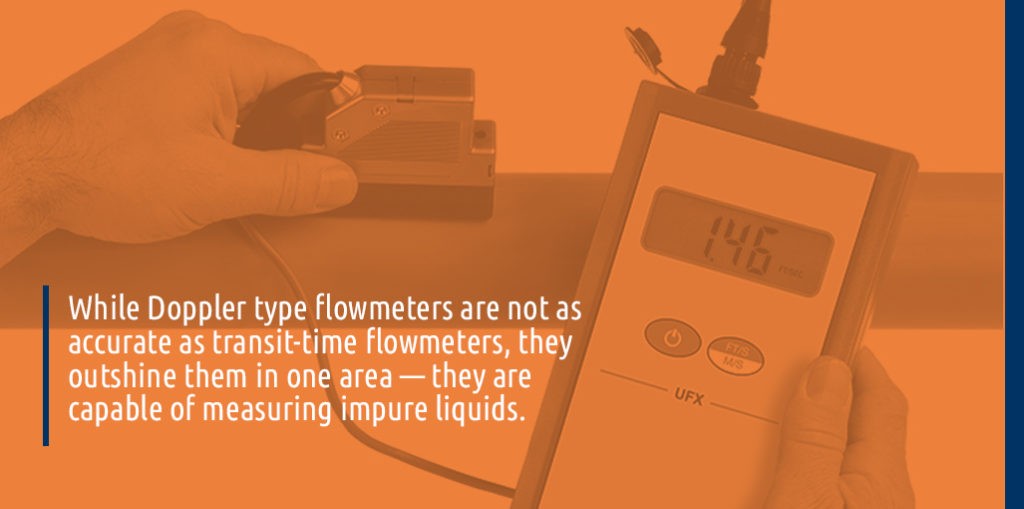
While Doppler type flowmeters are not as accurate as transit-time flowmeters, they outshine them in one area — they are capable of measuring impure liquids. Doppler type flowmeters rely on particulates in the liquid to measure flow, so they can be applied to liquids with larger quantities of particulates and air bubbles. It is important to note, however, that Doppler type flowmeters are still limited because they must be used on liquids that can carry ultrasonic waves.
While this advantage is helpful in certain cases, Doppler type flowmeters do come with multiple drawbacks, including:
- Sensitivity to temperature changes: Doppler type ultrasonic transducers are also extremely sensitive to changes in temperature, density and concentration, meaning any changes to the contents of the pipe may negatively affect the accuracy of a Doppler transducer’s results.
- Substance limitations: In addition to being unworkable with slurries, Doppler ultrasonic flowmeters are less effective when opaque fluids pass too closely to the pipe wall.
Ultrasonic flowmeters are typically used to measure the velocity of liquids that are molecularly capable of letting ultrasonic waves pass through them. These liquids include water, molten sulfur, cryogenic liquids and chemicals.
Advantages of Clamp-On Ultrasonic Flowmeters
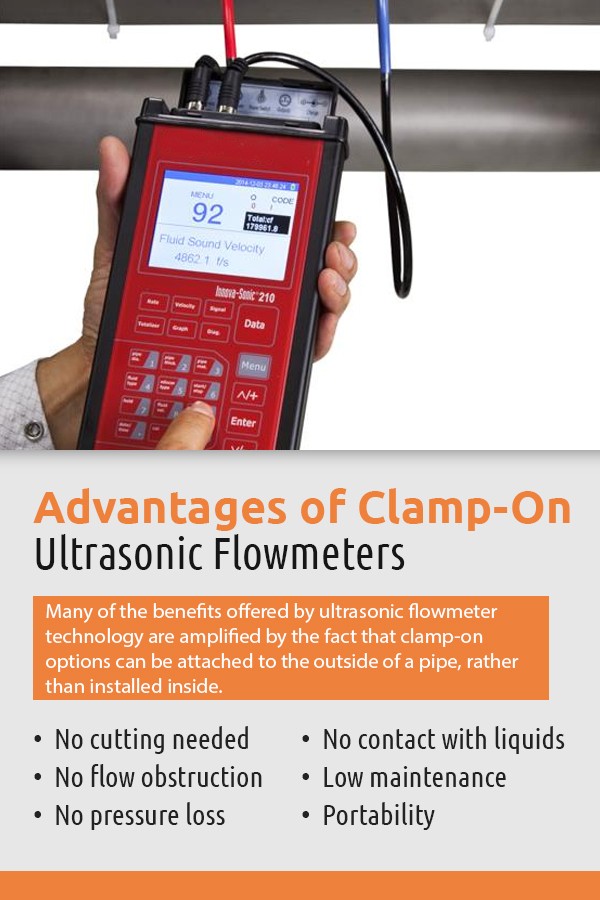
Many of the benefits offered by ultrasonic flowmeter technology are amplified by the fact that clamp-on options can be attached to the outside of a pipe, rather than installed inside. Some of these added benefits include:
- No cutting needed: Because clamp-on ultrasonic transducers do not need to be installed inside the pipe, cutting isn’t necessary. The pipes don’t need to be shut down to install a new flowmeter, meaning process uptime is kept to a maximum. This also reduces the chances of damaging the pipe and creating a leak, which can severely affect product quality and maintenance costs.
- No flow obstruction: Traditional flowmeters must often be installed inside the pipe to measure flow. Internal installations can pose a problem based on their location, as they present an obstruction in the pipe. For more viscous fluids, this can disrupt the flow, potentially trapping particles and leading to buildup over time. While internally installed ultrasonic flowmeters can potentially cause this issue, clamp-on meters avoid it completely by attaching to the outside of the pipe.
- No pressure loss: Ultrasonic flowmeters don’t need to make contact with the fluid, so there is no potential for pressure loss as a result of installation or use. This means there is no need to compensate for lost pressure.
- No contact with liquids: In traditional flowmeters that require contact with the fluid, many issues can occur. The presence of the flowmeter may potentially pollute or degrade the fluid in the pipe, which is a common issue for the food production, medical and chemical industries. Additionally, meters in pipes that carry chemically or physically aggressive substances can degrade quickly, requiring more frequent replacement. Clamp-on flow sensors have no need to contact the fluid directly to measure flow, so the flowmeter does not interact with the fluids.
- Low maintenance: Since they have no moving parts, have no need for cutting and don’t come in contact with harmful substances, clamp-on ultrasonic flowmeters last a long time with very little maintenance. On top of their long-lasting nature, these meters can be serviced without shutting down operations or opening a pipe. In most cases, a new clamp-on ultrasonic meter can be purchased to replace an old one with relative ease.
- Portability: While inserted and inline ultrasonic flowmeters are a great option for most pipes, clamp-on flowmeters offer an additional benefit of being portable.
In addition to these advantages, ultrasonic flowmeters have a relatively low cost of ownership compared to others, including internally installed meters. While more advanced versions typically have higher upfront costs, ultrasonic transducers have lower installation costs, fewer maintenance costs and longer lifespans.
Disadvantages of Clamp-On Ultrasonic Flowmeters
Clamp-on ultrasonic flowmeters also have some disadvantages, like:
- Pipe condition requirements: Clamp-on ultrasonic flowmeters require high-quality pipe conditions to work properly. They will not work on any pipes that are made of or contain levels of cement or concrete. They are also negatively affected by rust, both inside and outside pipe — even small rust deposits can affect results.
- Reduced accuracy: Compared to other ultrasonic flowmeters that directly measure fluid without a pipe in the way, clamp-on ultrasonic flowmeters are less accurate. Though their accuracy is still relatively high and less likely to be affected by wear and tear from contact with liquids, the difference may be too significant for more accuracy-dependent operations.
For many operations, the advantages of clamp-on ultrasonic flowmeters far outweigh the disadvantages, but it’s essential to consider the requirements of your application before making a decision.
GES Repair’s Flowmeter Services
Ultrasonic flowmeters offer several advantages that can be leveraged by a wide array of industries. One of the most significant factors is that these flowmeters have lower maintenance costs and longer lifespans. However, while maintenance may be needed less frequently for these types of meters, quality maintenance should never be ignored or overlooked.
No matter the type of flowmeter your business is using, Global Electronic Services can help you stay on top of maintaining your flowmeters by providing quality service with excellent turnaround times and affordable pricing. Our skilled technicians are familiar with a wide array of industrial electronics, including ultrasonic equipment and a wide range of flowmeters from all the leading manufacturers.
Get your equipment back online with GES and our factory-trained, certified technicians that put your needs first. Learn more about GES and our ultrasonic flowmeter services today by reaching out to one of our specialists at 1-877-249-1701, or by requesting a free quote online.

